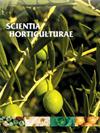Lipids modifications during walnut development: Changes in the composition and metabolic regulation of oil bodies
IF 3.9
2区 农林科学
Q1 HORTICULTURE
引用次数: 0
Abstract
Walnut oil bodies (WOBs), the storage lipid organelles that forms and accumulates with walnut development. However, there is little literature about the lipid compositions and dynamic changes of WOBs during development. To address this gap in knowledge, lipidomics profile and metabolic modulation of WOBs during walnut (wen 185 cultivar) development (60, 74, 88, 102, 116, and 130 days after pollination, S1-S6) were analyzed using ultra performance liquid chromatography-tandem mass spectrometry (UPLC-MS/MS). A total of 305 individual lipids in WOBs were mainly glycerolipids (79.34%), glycerophospholipids (12.13%), and fatty acyls (7.21%). Moreover, triacylglycerols, diacylglycerols, monoglycerides, free fatty acids, phosphatidylglycerols and phosphatidylcholines had high relative content. Notably, triacylglycerols were the most abundant lipids in WOBs at every stage and they were rich in unsaturated fatty acids, especially linoleic acid. With the walnut development, 209 lipids changed significantly between the S1 and S6 stages. The linoleic acid metabolism, glycerophospholipid metabolism and glycerolipid metabolism pathways were significantly enriched. Among the three metabolic pathways, linoleic acid metabolism had the greatest impact on WOBs formation and metabolism. Therefore, regulating linoleic acid metabolism would be one of the strategies to control the formation and metabolism of WOBs. Together, these findings contributed to further understanding of the potential mechanisms of lipid accumulation in WOBs.核桃发育过程中的脂质变化:油体成分和代谢调节的变化
核桃油体(WOBs)是随着核桃发育而形成和积累的贮藏脂质细胞器。然而,有关核桃油体在发育过程中的脂质组成和动态变化的文献很少。为了填补这一知识空白,我们使用超高效液相色谱-串联质谱(UPLC-MS/MS)分析了核桃(wen 185 栽培品种)发育过程(授粉后 60、74、88、102、116 和 130 天,S1-S6)中 WOBs 的脂质组学特征和代谢调控。WOB 中的 305 种单个脂类主要是甘油脂类(79.34%)、甘油磷脂类(12.13%)和脂肪酰类(7.21%)。此外,三酰甘油、二酰甘油、单甘油酯、游离脂肪酸、磷脂酰甘油和磷脂酰胆碱的相对含量也很高。值得注意的是,三酰甘油是每个阶段核桃仁中最丰富的脂类,它们富含不饱和脂肪酸,尤其是亚油酸。随着核桃的发育,209 种脂质在 S1 和 S6 阶段发生了显著变化。亚油酸代谢、甘油磷脂代谢和甘油酯代谢途径明显丰富。在这三条代谢途径中,亚油酸代谢对 WOBs 的形成和代谢影响最大。因此,调节亚油酸代谢将是控制 WOBs 形成和代谢的策略之一。这些发现有助于进一步了解 WOBs 中脂质积累的潜在机制。
本文章由计算机程序翻译,如有差异,请以英文原文为准。
求助全文
约1分钟内获得全文
求助全文
来源期刊

Scientia Horticulturae
农林科学-园艺
CiteScore
8.60
自引率
4.70%
发文量
796
审稿时长
47 days
期刊介绍:
Scientia Horticulturae is an international journal publishing research related to horticultural crops. Articles in the journal deal with open or protected production of vegetables, fruits, edible fungi and ornamentals under temperate, subtropical and tropical conditions. Papers in related areas (biochemistry, micropropagation, soil science, plant breeding, plant physiology, phytopathology, etc.) are considered, if they contain information of direct significance to horticulture. Papers on the technical aspects of horticulture (engineering, crop processing, storage, transport etc.) are accepted for publication only if they relate directly to the living product. In the case of plantation crops, those yielding a product that may be used fresh (e.g. tropical vegetables, citrus, bananas, and other fruits) will be considered, while those papers describing the processing of the product (e.g. rubber, tobacco, and quinine) will not. The scope of the journal includes all horticultural crops but does not include speciality crops such as, medicinal crops or forestry crops, such as bamboo. Basic molecular studies without any direct application in horticulture will not be considered for this journal.
 求助内容:
求助内容: 应助结果提醒方式:
应助结果提醒方式:


